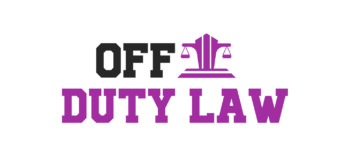In Westchester, it’s not unusual for a routine shift to be derailed by a malfunctioning saw, a defective pallet jack, or a tool that lacked a simple guard. When a product fails, the law doesn’t expect an injured worker to shoulder the fallout alone. That’s where understanding workers’ compensation and product liability, often at the same time, matters. A seasoned Product Liability Attorney Westchester can help identify whether a third-party claim against a manufacturer or distributor should accompany a workers’ compensation case. Firms like Tomkiel & Tomkiel Law Firm regularly evaluate these overlapping claims so injured employees can pursue every avenue of recovery available under New York law.
Unsafe tools and defective machinery in local workplaces
From construction on the I‑287 corridor to food service, healthcare, landscaping, and light manufacturing in Yonkers, White Plains, Mount Vernon, and beyond, Westchester workers rely on tools and machinery all day. When those products are unsafe, a typical injury can quickly become a complex legal matter.
Common equipment tied to serious injuries:
- Saws and presses lacking proper guards (amputations, crush injuries)
- Nail guns, staplers, and fasteners with misfire risks
- Forklifts, pallet jacks, and order pickers with braking or steering defects
- Ladders and scaffolding with structural failures
- Meat slicers and industrial mixers without adequate emergency stops
- Electrical tools with faulty insulation or inadequate warnings
Why these injuries happen often comes down to one of three product issues:
- Design defect: The product was dangerous by design (e.g., no feasible guard on a press).
- Manufacturing defect: This unit left the factory with a flaw (e.g., bad weld, faulty component).
- Failure to warn/instruct: The product lacked clear warnings or instructions about foreseeable hazards.
New York workplaces must follow OSHA and state safety rules, but even the safest employer can’t eliminate a product defect that arrives baked into the tool. That’s why product liability law targets the companies in the chain of distribution, manufacturers, distributors, and sometimes retailers, when a tool or machine fails and causes harm.
How product liability law protects injured employees
New York product liability law gives injured workers a path to hold manufacturers and sellers accountable when a defective product contributes to an injury, even if workers’ compensation covers medical bills and a portion of lost wages.
Key theories of recovery:
- Strict liability: If a product is defective (design, manufacturing, or warnings) and that defect causes injury during foreseeable use, the manufacturer can be liable, regardless of how careful it claims to have been.
- Negligence: The maker or seller failed to use reasonable care in designing, making, or warning about the product.
- Breach of warranty: Express or implied warranties about fitness and safety were broken.
What an injured employee can recover in a third‑party product claim (above and beyond workers’ compensation):
- Pain and suffering
- Full lost earnings and lost earning capacity (not just partial wage benefits)
- Medical expenses not covered by comp, future care, and rehabilitation
- Household services and other out‑of‑pocket costs
Timing matters. In New York, the statute of limitations for most product‑related personal injury claims is generally three years from the date of injury, while wrongful death claims are generally two years. Workers’ compensation notice deadlines also apply (typically 30 days’ notice to the employer and a two‑year filing period). Acting early helps preserve the product, the scene, and critical records, evidence that can make or break a case.
Bottom line: Workers’ compensation is not the only remedy. A coordinated strategy led by an experienced Product Liability Attorney Westchester ensures all responsible parties, not just the employer’s insurer, are on the hook.
Overlap between workers’ compensation and product liability claims
Work injuries involving defective tools or machines usually involve two tracks:
- Workers’ compensation: A no‑fault system that pays medical care and wage benefits but bars lawsuits against the employer in most cases.
- Product liability (third‑party) claim: A civil action against the manufacturer, distributor, or other non‑employer parties responsible for the defect.
How they interact in New York:
- Both claims can proceed at the same time. The injured worker gets immediate comp benefits while investigating a third‑party case.
- The workers’ compensation insurer has a lien on portions of the third‑party recovery under Workers’ Compensation Law § 29. That means part of a settlement or verdict reimburses the comp carrier for benefits it paid, subject to statutory reductions for legal fees and costs.
- Consent to settle: If there’s a comp lien, the worker generally needs written consent from the carrier before finalizing a third‑party settlement (or a court order under § 29(5)).
- No double recovery: The law prevents collecting the same dollar twice, but a third‑party claim opens categories of damages that comp doesn’t pay (pain and suffering, full lost income, future care).
Advanced nuance: Employer immunity and “grave injury.” While the employer is typically immune from suit, a third‑party defendant can seek contribution from the employer only in limited circumstances, most notably if the worker suffered a statutory “grave injury” under WCL § 11 (e.g., death, multiple amputations, severe brain injury). An experienced lawyer threads these issues carefully to maximize the worker’s overall net recovery.
Legal steps for proving manufacturer or employer negligence
Proving a product case is evidence‑heavy. Early moves can determine whether a claim succeeds or stalls.
Practical steps after a product‑related work injury:
- Get prompt medical care and report the incident. Accurate medical records link the mechanism of injury to the defective product.
- Preserve the product. Don’t repair, discard, or return it. Store it securely. Photograph the tool, the scene, and any guards, labels, or warnings.
- Identify the chain of distribution. Record brand, model, serial numbers, purchase records, and any maintenance or retrofit history.
- Notify key parties. Counsel may send spoliation/preservation letters to the employer, manufacturer, and others to lock down evidence (including surveillance video and training logs).
- Document use and training. How the tool was used, what training was provided, and whether safer alternatives existed can be pivotal.
- Secure expert support. Mechanical, electrical, human factors, and safety engineering experts analyze defect, causation, and feasible alternative designs.
- Calculate full damages. Beyond comp benefits, document lost earning capacity, long‑term care, home modifications, and non‑economic harm.
Legal theories and proof:
- Design defect: Show a feasible, safer alternative design, that the risk outweighed utility, and the defect was a substantial factor in causing injury.
- Manufacturing defect: Prove a departure from the product’s intended specifications (often via failure analysis and component testing).
- Failure to warn: Establish that foreseeable risks were not adequately conveyed and that an adequate warning would have changed behavior.
Where employer conduct fits in:
- Employer negligence usually can’t be sued directly by the worker, but it can supply important evidence, maintenance lapses, disabled guards, or ignored recall notices, supporting claims against manufacturers or service vendors.
- For construction mishaps, New York Labor Law §§ 200, 240(1), and 241(6) may add separate routes to liability against owners and contractors, independent of product claims.
Given these moving parts, many Westchester workers turn to firms with deep product‑injury experience. Tomkiel & Tomkiel Law Firm regularly coordinates the comp claim, third‑party litigation, and lien negotiations to protect the worker’s bottom line.
Recent Westchester cases highlighting product-related injuries
Recent filings and reported resolutions in Westchester and the broader Hudson Valley reflect familiar patterns:
- Unguarded press injury in a light‑manufacturing facility: Allegations centered on a missing interlock and inadequate warnings. A third‑party settlement provided significant compensation beyond comp benefits, including future care and loss of earning capacity.
- Forklift braking defect at a distribution warehouse: Maintenance records and component testing supported a manufacturing defect theory. The workers’ compensation carrier asserted a lien, which was negotiated down under WCL § 29 to increase the worker’s net.
- Nail gun misfire on a residential build: Claims focused on failure to warn about sequential‑trigger options and training materials. Parallel Labor Law claims against a contractor proceeded alongside the product case.
While every matter turns on its facts, these outcomes underscore themes that recur in Westchester: preserve the tool, act fast on investigation, and pair the comp claim with a targeted product case when the evidence supports it. For injured employees, consulting a Product Liability Attorney Westchester early helps ensure no viable claim, or dollar of recovery, is left on the table.
This article is general information, not legal advice. Deadlines and strategies vary: speaking with a qualified attorney about specific facts is always recommended.











